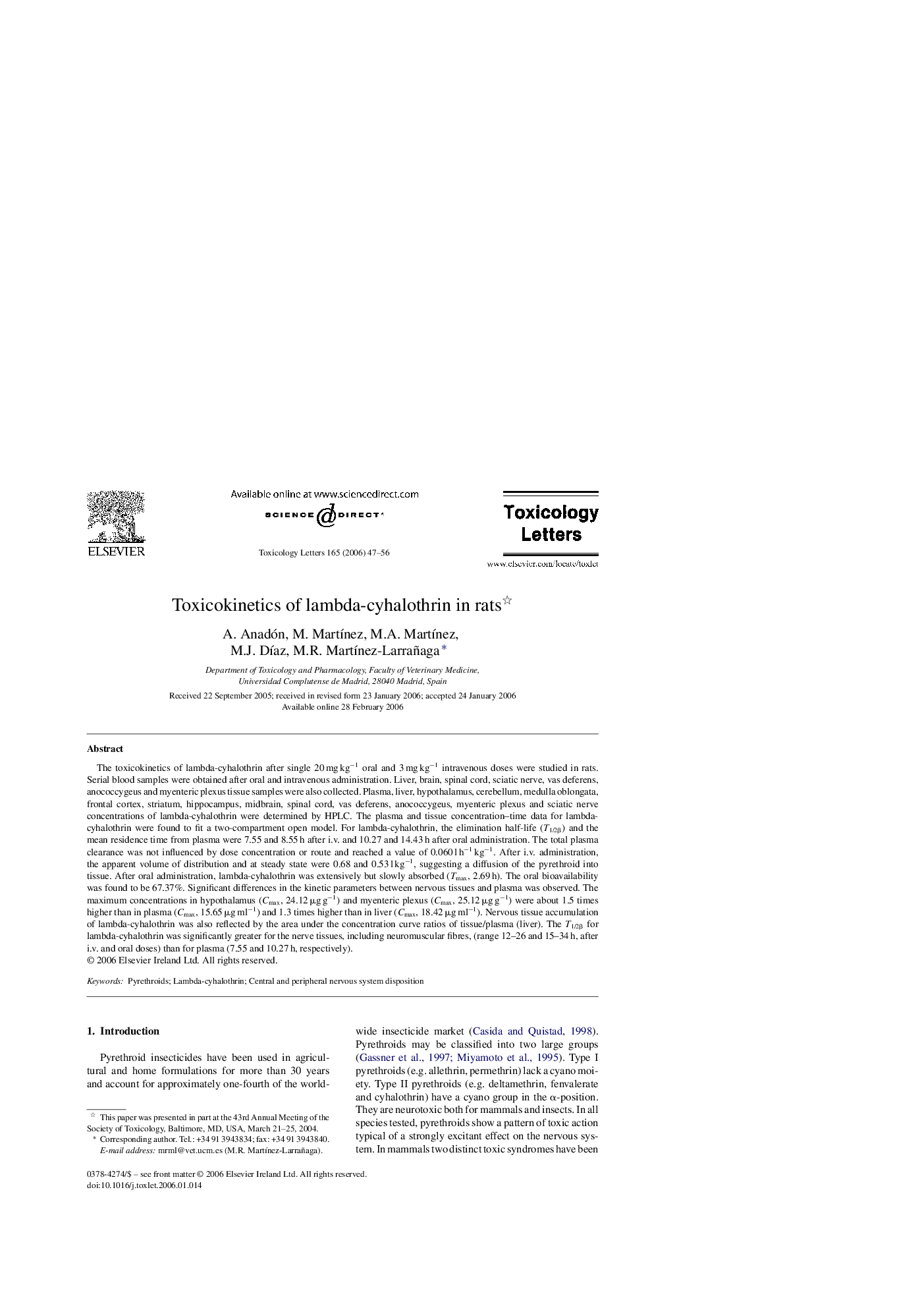| Article ID | Journal | Published Year | Pages | File Type |
|---|---|---|---|---|
| 2601639 | Toxicology Letters | 2006 | 10 Pages |
The toxicokinetics of lambda-cyhalothrin after single 20 mg kg−1 oral and 3 mg kg−1 intravenous doses were studied in rats. Serial blood samples were obtained after oral and intravenous administration. Liver, brain, spinal cord, sciatic nerve, vas deferens, anococcygeus and myenteric plexus tissue samples were also collected. Plasma, liver, hypothalamus, cerebellum, medulla oblongata, frontal cortex, striatum, hippocampus, midbrain, spinal cord, vas deferens, anococcygeus, myenteric plexus and sciatic nerve concentrations of lambda-cyhalothrin were determined by HPLC. The plasma and tissue concentration–time data for lambda-cyhalothrin were found to fit a two-compartment open model. For lambda-cyhalothrin, the elimination half-life (T1/2β) and the mean residence time from plasma were 7.55 and 8.55 h after i.v. and 10.27 and 14.43 h after oral administration. The total plasma clearance was not influenced by dose concentration or route and reached a value of 0.060 l h−1 kg−1. After i.v. administration, the apparent volume of distribution and at steady state were 0.68 and 0.53 l kg−1, suggesting a diffusion of the pyrethroid into tissue. After oral administration, lambda-cyhalothrin was extensively but slowly absorbed (Tmax, 2.69 h). The oral bioavailability was found to be 67.37%. Significant differences in the kinetic parameters between nervous tissues and plasma was observed. The maximum concentrations in hypothalamus (Cmax, 24.12 μg g−1) and myenteric plexus (Cmax, 25.12 μg g−1) were about 1.5 times higher than in plasma (Cmax, 15.65 μg ml−1) and 1.3 times higher than in liver (Cmax, 18.42 μg ml−1). Nervous tissue accumulation of lambda-cyhalothrin was also reflected by the area under the concentration curve ratios of tissue/plasma (liver). The T1/2β for lambda-cyhalothrin was significantly greater for the nerve tissues, including neuromuscular fibres, (range 12–26 and 15–34 h, after i.v. and oral doses) than for plasma (7.55 and 10.27 h, respectively).
